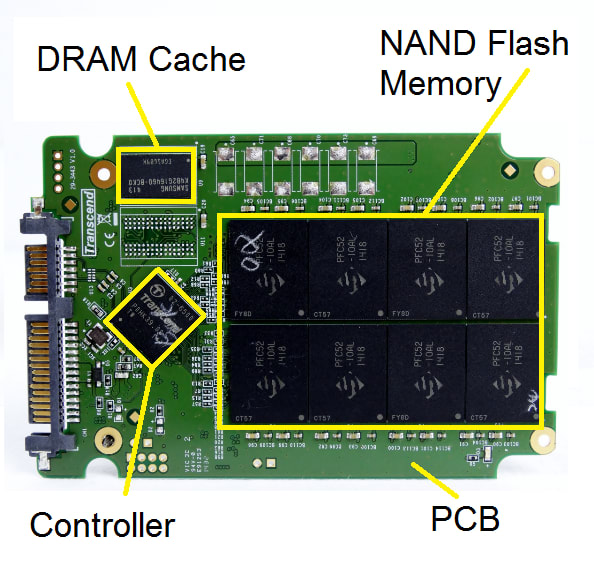How to Choose a Suitable SSD
Follow articleHow do you feel about this article? Help us to provide better content for you.
Thank you! Your feedback has been received.
There was a problem submitting your feedback, please try again later.
What do you think of this article?
When looking for the right Solid State Drive - the secret lies in the NAND flash chips!
Solid state drives (SSDs) are often the preferred choice nowadays over their HDD (Hard Disk Drive) predecessors for either upgrading older systems or expanding the storage capabilities of newer ones, at a much lower cost. SSDs are significantly faster than HDDs with write-speeds of over 500MB/s for typical units, compared to around 100MB/s with HDDs. This is mainly down to the fact that they do not have moving parts, which also means that there’s no noise, minimal heat, and lower failure rates, making them a much more reliable solution too!
Composition of SSD storage devices
SSDs are predominately made up of a controller, DRAM memory and NAND flash memory. The controller is the main connector between the NAND flash and your computer. The controller acts as an electronic interface between the SSD and the system. The DRAM cache is volatile memory that must have power to function. DRAM is not a compulsory component within an SSD. Some SSDs are sold without DRAM making them more affordable to the end user. However, having DRAM does improve the overall reliability and speeds of the drive, so this should also be considered. The final component within an SSD is the NAND flash which is non-volatile memory (meaning it does not require power in order to hold data) and this is where data is eventually stored.
Types of NAND Flash
NAND flash comes in different variations known as Single Level Cell (SLC), Multi-Level Cell (MLC), and Triple Level Cell (TLC). SLC is the fastest of the three and has the longest lifespan—up to 50,000 P/E cycles. Its downside is that it is the most expensive variation, and available only in smaller capacities. MLC is less expensive but provides better performance and reliability than TLC—up to 3,000 P/E cycles—which is acceptable for everyday computing use and gaming. TLC, meanwhile, is the most affordable, with fewer than 1,500 P/E cycles, which is good enough for basic consumer applications, but would never be suitable for more intensive applications.
3D NAND Flash
In the last few years, 3D NAND Flash has been created to create a solution to the physical scaling limitations that were experienced with 2D planar NAND Flash. Essentially this new technology allows for higher capacities to be created. Previously manufacturers were limited in space however now memory cells can be stacked vertically in several layers. 3D NAND Flash will allow for greater capabilities and better performance.
Transcend's Range of Solid State Drives
Transcend prides itself as one of the leading manufacturers of solid state drives, offering a comprehensive range of customisable solutions for any platform. We ensure the highest standard of quality is applied, and Transcend SSDs undergo rigorous testing at every stage of the production process, including tests for vibration, temperature and humidity, speed, and functionality creating an undisputed reputation of reliability.






